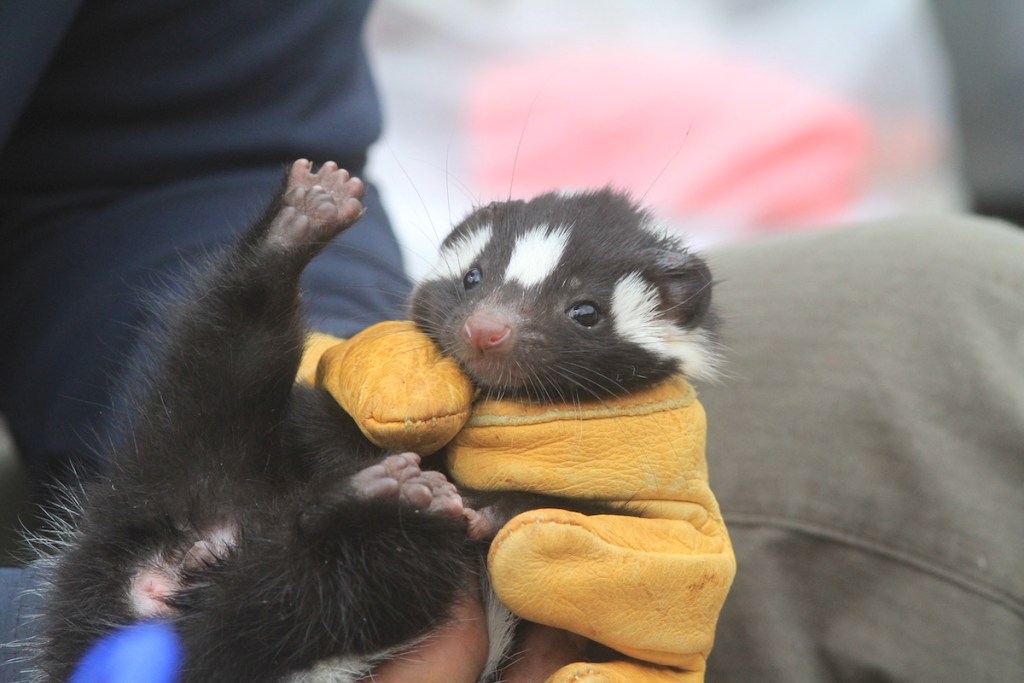Deep within Scorpion Canyon, on the southeast fringe of Santa Cruz Island, the nights arrive quickly during the winter. The sun sits lower on the horizon never allowing for much warmth to penetrate the canyon. As dusk approaches, the canyon cools, and by midnight it can be downright frigid.
In recent months, I’ve spent many nights looking for nocturnal life lurking beneath starry skies, especially the secretive island spotted skunk (Spilogale gracilis amphialus). I’ve smelled them on far more occasions than I’ve seen them. All those brief moments have happened on Santa Cruz and Santa Rosa Islands, the only places in the world to find this tiny carnivore.
“The skunks on Santa Rosa and Santa Cruz Islands are genetically quite distinct,” said Lara Brenner, island scientist for The Nature Conservancy. “The thought is that they probably arrived just before Santarosae broke up (9,400 years ago), so the skunks on the two islands are almost as distinct as they are from the mainland population. I’m not sure if you can tell them apart based on their markings.”
Island Isolation
Long before the Northern Channel Islands, there was just the one “mega island” scientists named Santarosae. At the time, sea levels were nearly 400 feet lower than they are now, and the channel crossing was roughly four miles. However, following the last Ice Age and substantial sea level rise, some island species evolved into dwarf species due to isolation and dwindling food sources. In the case of the island spotted skunk, it evolved into its own species, but not a dwarf species. Genetically they are distinct from their mainland cousin, the western spotted skunk. However, when looking at the two species it is difficult telling them apart. At just over a pound, the island spotted skunk appears as a little battery-operated toy hopping around its island habitat. Ironically, it’s the second largest land mammal on Santa Cruz and Santa Rosa Islands. The island fox is the largest land mammal on those two isles, plus San Miguel Island. Although the endemic island fox is a dwarf species, it is roughly three pounds larger than its spotted counterpart.
“The latest genetic evidence shows that skunks got here before foxes, but coincident with indigenous peoples’ arrival to the island,” said Brenner. “So, it’s possible (likely?) that they were transported by humans, but the archeological evidence doesn’t seem to show as close of a relationship with the skunks as there was with the foxes.”
Sharing the Island
As I hiked out of Scorpion Canyon and approached my first marine terrace, the temperature warmed by 20 degrees. The weather conditions were ripe for nocturnal activity.
I heard burrowing owls seemingly heckling me in the darkness. A poorwill nestled a few feet away, bedding down in the warm island loam. Still, an island spotted skunk eluded me. A terrestrial mystery, according to biologists there might be just 1,000 of them between the two islands, making them one of the rarest carnivores in the world. They once inhabited San Miguel Island, but are now extinct.
Shining a low beam on a seemingly lifeless marine terrace with my headlamp, I spotted movement in a narrow gully. The white, fluffy tail gave it away: an island spotted skunk was foraging for food. Feeding on a steady diet of endemic deer mice, Jerusalem crickets, and berries, the skunk continued to duck inside a narrow crevice within the gully. After 10 minutes of peekaboo, it forgot about me and continued foraging.
After it scurried into dense island flora for good, I began my descent back into Scorpion Canyon. Along the way I came across another skunk, and for about 50 paces we shared the winding trail toward Cavern Point. As I kept pace, it bounced along in front of me and then veered off toward the sheer, crumbling cliffs. When it did, a burrowing owl dive bombed the hopping skunk as it scrambled down the cliff.
“Skunks will intensely use a small part of their territory (<0.5 km2) for a week or two and then move to a completely different part of their territory for a week or two,” said Brenner.
At the bottom of Scorpion Canyon, the temps grew cooler. I could see my breath wafting skyward in the beam of my headlamp. As I walked up toward my tent in the lower campground, I smelled the pungent stench of an island spotted skunk. Sleep would have to wait. I scoured the dark island biome for another spotted carnivore.
Support the Santa Barbara Independent through a long-term or a single contribution.

